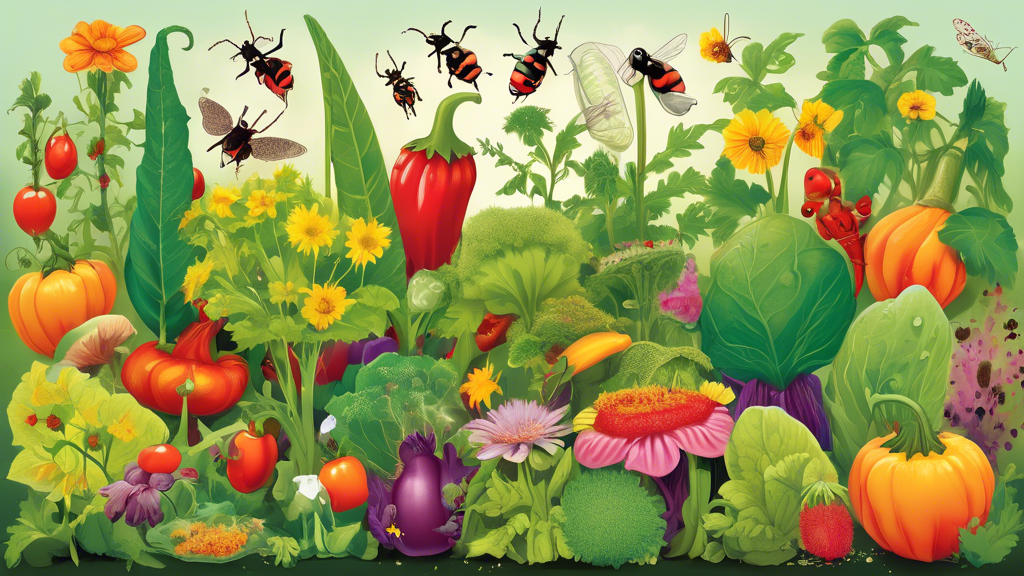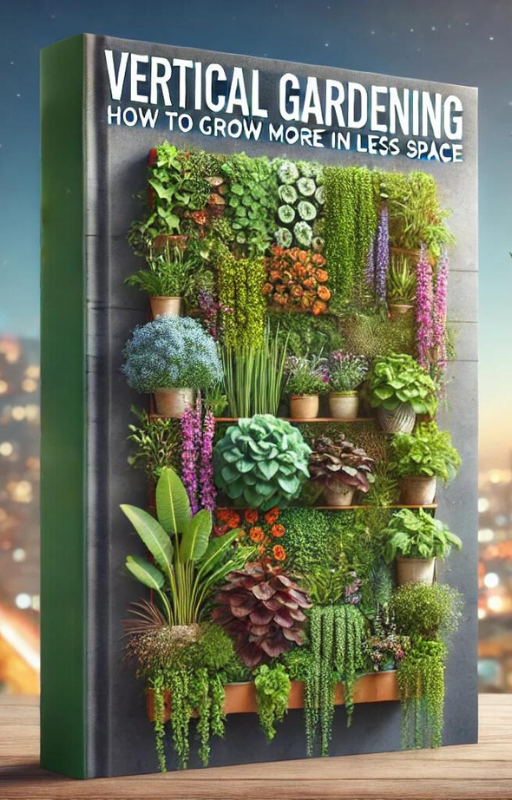Maintaining a flourishing garden can be a fulfilling endeavor, but it often comes with its set of challenges, one of which is garden pests. Recognizing and managing these pests is key to preserving the health of your plants. This article delves into identifying common garden pests, such as aphids, caterpillars, and snails, by examining the common signs and symptoms of infestations.
Once you’ve identified the culprits, the next step is to explore effective methods to control them. We will look into both natural and organic solutions, as well as chemical treatments and their proper application. Whether you prefer eco-friendly approaches or more conventional methods, this guide provides the information needed to protect your garden and promote plant health.
Identifying Common Garden Pests
Common Signs and Symptoms of Pest Infestations
Gardening can be incredibly rewarding, but dealing with pests can quickly turn it into a frustrating endeavor. Understanding the signs of pest activity is crucial for managing your garden’s health. Here are some common indicators:
- Yellowing Leaves: Many pests cause leaves to turn yellow as they feed on the plant’s sap.
- Holes in Leaves: Certain pests, such as caterpillars and beetles, chew through leaves, leaving visible holes.
- Sticky Residue: Aphids and some other insects excrete a sticky substance known as honeydew, which can coat leaves and branches.
- Stunted Growth: Plants under pest attack often show stunted growth due to the damage to their roots or stems.
- Discolored Spots: Some pests leave behind spots that range in color from light yellow to dark brown.
- Visible Pests: Sometimes, you may see the pests themselves, like caterpillars or snails, on your plants.
Detailed Profiles of Common Garden Pests (Aphids, Caterpillars, Snails, and More)
Aphids:
Aphids are small, soft-bodied insects that can be green, black, yellow, or even pink. They typically cluster on the undersides of leaves and stems. Aphids feed by sucking sap from plants, which can lead to yellowing leaves, curled foliage, and stunted growth. They also excrete honeydew, which can attract ants and lead to the growth of sooty mold.
Caterpillars:
Caterpillars are the larval stage of butterflies and moths. They vary in size and color but are usually easy to identify due to their elongated bodies with multiple legs. They chew holes in leaves and can defoliate an entire plant if left unchecked. Look for frass (insect droppings) near the feeding sites as another sign of caterpillar activity.
Snails and Slugs:
These pests are notorious for their voracious appetite for a wide array of plants. Both snails and slugs leave behind a trail of mucus and large, irregularly shaped holes in leaves. They are mostly active at night or during wet, overcast conditions, making them more challenging to detect during the day.
Spider Mites:
Spider mites are tiny, spider-like pests that typically reside on the undersides of leaves. They can be red, green, yellow, or brown. Due to their small size, they are difficult to see without a magnifying glass. Signs of spider mite infestation include fine webbing on plants and speckled, discolored leaves that eventually turn bronze or yellow and fall off.
Whiteflies:
Whiteflies are small, white, moth-like insects that often congregate on the undersides of leaves. They feed by sucking plant juices, causing leaves to yellow and wilt. Heavily infested plants may become stunted and fail to thrive. Like aphids, whiteflies produce honeydew, which can lead to sooty mold buildup.
Leaf Miners:
Leaf miners are the larval stage of certain insects, like flies, beetles, or moths. These larvae burrow between the layers of leaves, creating serpentine trails or blotchy patterns. This tunneling can lead to weakened plants and increased susceptibility to diseases.
Mealybugs:
Mealybugs appear as tiny, white, cotton-like masses on stems, leaves, and fruits. They feed on plant sap, causing leaf yellowing, curling, and stunted growth. Mealybugs also excrete honeydew, promoting sooty mold growth.
Recognizing these common garden pests and their symptoms can help you implement effective control measures to protect your plants. Early intervention is key to managing these pests and maintaining a healthy garden.

Effective Control Methods for Garden Pests
Natural and Organic Pest Control Solutions
Utilizing natural and organic methods to manage garden pests can be an effective and environmentally friendly approach. These strategies often focus on creating a balanced ecosystem where plants can thrive with minimal intervention.
Companion Planting
Companion planting involves placing certain plants next to each other to deter pests. For instance, marigolds can repel nematodes and certain insects, while basil can help keep mosquitoes and flies at bay. This technique leverages natural plant defenses to maintain a healthier garden.
Beneficial Insects
Encouraging beneficial insects, such as ladybugs, spiders, and predatory beetles, can naturally reduce pest populations. These insects prey on harmful pests, providing a biological control measure that helps keep the garden in balance.
Neem Oil
Neem oil is derived from the seeds of the neem tree and works as an effective insect repellent. It disrupts the growth and reproduction of insects, reducing their ability to feed and proliferate. Dilute neem oil with water according to the manufacturer’s instructions before applying it to affected plants.
Diatomaceous Earth
This powdery substance consists of fossilized algae and can be sprinkled around plants to deter pests like slugs and beetles. Diatomaceous earth works by damaging the exoskeletons of insects, causing them to dehydrate and die.
Handpicking
For small infestations, manually removing pests like aphids or caterpillars can be a straightforward method of control. Regularly inspecting plants and removing any visible pests can prevent minor problems from becoming severe.
Chemical Treatments and Their Safe Usage
When natural methods are insufficient, chemical treatments can provide an effective solution. However, it is crucial to use these treatments responsibly to avoid harming beneficial insects, plants, or the surrounding environment.
Choosing the Right Pesticide
Select a pesticide specifically designed for the pest you are dealing with. Broad-spectrum pesticides may kill a wide variety of insects, including beneficial ones, so opt for targeted solutions whenever possible.
Reading and Following Instructions
Always read the label and follow the manufacturer’s instructions carefully. This includes diluting the pesticide correctly, applying it at the recommended time, and using appropriate protective gear. Proper usage ensures effectiveness and minimizes risk.
Spot Treatment
Applying pesticides directly to the affected areas, rather than spraying the entire garden, helps reduce the potential impact on non-target plants and insects. Focus on areas where pests are most active to control the problem efficiently.
Timing of Application
Apply chemical treatments during the early morning or late evening hours when beneficial insects, such as bees, are less active. This timing helps minimize harm to pollinators and other helpful organisms.
Environmental Considerations
Be mindful of the weather conditions and avoid applying pesticides on windy or rainy days, as this can cause the chemicals to drift or wash away, reducing their effectiveness and potentially contaminating nearby water sources.
Integrated Pest Management
Consider incorporating Integrated Pest Management (IPM) strategies that combine chemical, biological, and cultural controls for sustainable pest management. This holistic approach helps maintain a healthy garden ecosystem while effectively controlling pest populations.
By carefully balancing natural and chemical control methods, gardeners can manage pests effectively while fostering a thriving, dynamic garden ecosystem.
In conclusion, maintaining a healthy and thriving garden involves being vigilant against pest infestations. Recognizing the signs and symptoms early allows for prompt action, preventing extensive damage. Detailed knowledge about common garden pests such as aphids, caterpillars, and snails is essential for effective management. Employing natural and organic solutions can offer environmentally friendly alternatives for pest control, while chemical treatments, when used responsibly, can address more severe issues. By combining these methods, gardeners can create a balanced approach that protects their plants and promotes a flourishing garden ecosystem.


